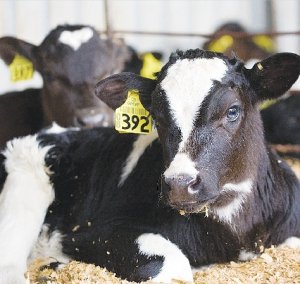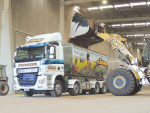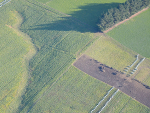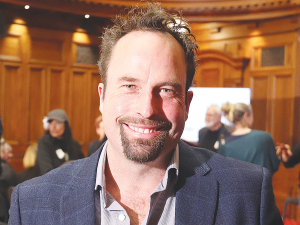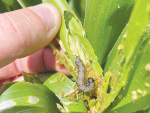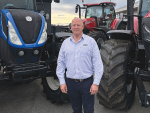This requires an understanding of the biology of the parasites involved (especially Ostertagia) and tailoring that to an individual farm situation.
Creating a bank of clean, good quality feed for autumn is essential.
Once calves have a significant worm burden, it is difficult to correct without the use of ivermectin. Organic remedies may help prevent this but they appear to perform poorly once the burden is sufficient to stop or reverse weight gains.
Worm eggs passed in the dung hatch into larvae and go through three development phases on pasture until they become infectious. When eaten, they go through one more stage to become egg-producing adults: that’s when they start doing damage. Under ideal conditions this whole cycle can take as little as four weeks.
The survival of larvae and their speed of development on pasture depend much on moisture and temperature. Summer dry and winter cold slow them right down. Larval survival is reduced too, but eggs are much more resistant and can hang around until conditions are more suitable. What tends to happen is a minor rise in the numbers of larvae in spring, then a drop-off in summer, followed by a rapid build-up in early autumn once the rains arrive and the weather cools off. This is the major danger period for spring-born calves.
There are several species of worms that can affect calves but the two most important ones are Ostertagia, which lives in the stomach (abomasum) and Cooperia which lives in the small intestine. Ostertagia in particular can make calves quite sick and substantially inhibits appetite.
A serious infestation of a combination of these two species results in a scouring animal losing weight with a suppressed immune system. It is now wide open to any other infections that happen to be around such as pneumonia, BVD or Yersinia and in a weakened calf these infections can be lethal.
It is virtually impossible – and indeed not desirable – to rear calves in a larvae-free environment. The objective is to keep larval intake low enough so weight gain is not affected while allowing just sufficient exposure for resistance to develop.
The key to achieving this is to minimise exposure to the autumn larval peak.
If significant larval intake happens early in the autumn, the consequent cycle of suppressed appetite and poor immune response is difficult to break without resorting to a conventional drench.
• Alan Thatcher is senior veterinarian, Massey University. Article sourced from www.organicpastoral.co.nz

